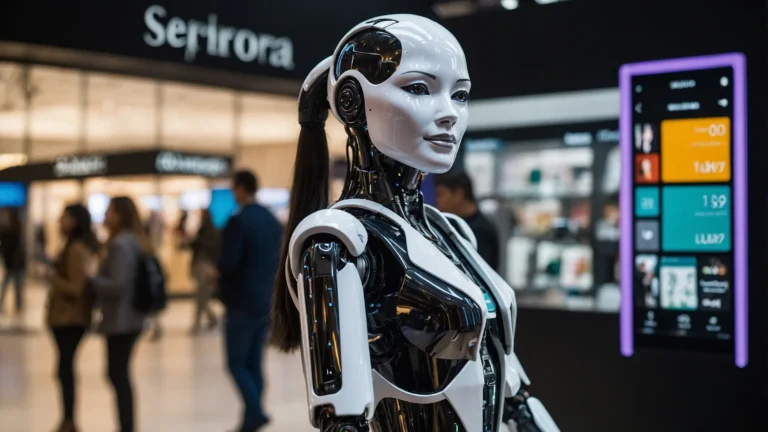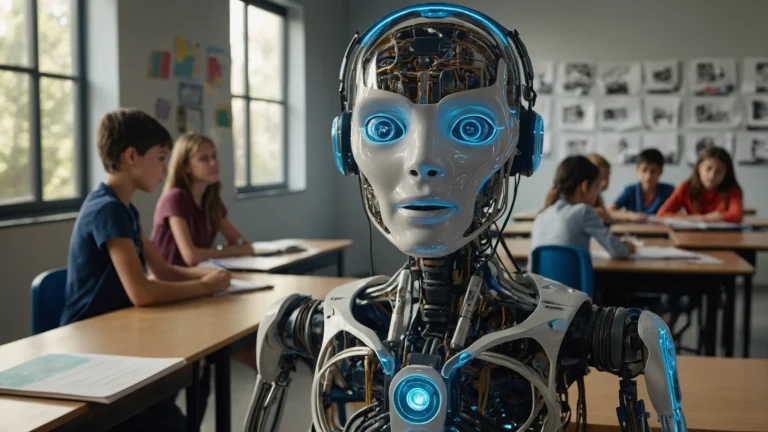AI in Customer Service: Enhancing Support, Speed, and Satisfaction
Customer service has long been considered a cost center, often limited by human bandwidth, working hours, and training budgets. But in 2025, artificial intelligence is transforming it into a scalable, strategic advantage.
With tools ranging from chatbots to predictive analytics, AI allows businesses to handle millions of customer interactions simultaneously, contextually, and with unprecedented precision. It doesn’t just reduce costs — it increases satisfaction, retention, and revenue.
Why AI in Customer Service Matters More Than Ever
The modern customer expects:
- Instant answers — not in hours, but in seconds.
- 24/7 support — across devices, platforms, and languages.
- Personalized attention — even at scale.
Human teams alone can’t meet these demands. But AI can.
According to a 2025 McKinsey report:
“Companies using AI in customer operations have increased productivity by up to 40% and customer satisfaction by 30%, while reducing costs by 20%.”
Key Applications of AI in Customer Service
1. 🧠 AI Chatbots and Virtual Assistants
These are no longer simple script-followers. With deep learning and NLP, bots like ChatGPT, IBM Watson Assistant, and Zendesk AI provide nuanced, natural conversations — often indistinguishable from human support.
2. 🔄 Predictive Support
By analyzing past interactions, purchase history, and behavior, AI can predict problems before they happen — like identifying churn risks or recommending proactive fixes for a tech issue.
3. 🌍 Multilingual and Multichannel
AI tools like Google Dialogflow and LivePerson enable real-time communication in 100+ languages over voice, text, social media, and apps — maintaining brand voice and quality.
4. 💡 Smart Routing and Escalation
AI evaluates the urgency, tone, and content of messages, routing customers to the right agent (or bot) based on intent and priority — reducing time to resolution.
5. 🎯 Personalized Recommendations and Responses
With customer profiles, behavior tracking, and sentiment detection, AI can suggest relevant products, support articles, or upgrades — increasing cross-sell and upsell success.
Real-World Success Stories
- Amtrak’s Julie AI agent handles over 5 million calls per year, reducing human staffing needs and increasing booking rates.
- HSBC uses AI to process customer emails, understanding the request and executing the appropriate financial operation — within seconds.
- Spotify’s AI support not only resolves issues but also suggests playlists based on recent user feedback.

Benefits for Customers
- 🔹 Faster response times
- 🔹 Consistent experiences across platforms
- 🔹 Higher personalization
- 🔹 More self-service options
Benefits for Businesses
- 🔹 Reduced support costs
- 🔹 Increased customer satisfaction (CSAT)
- 🔹 Greater agent efficiency and retention
- 🔹 Actionable customer insights
AI vs Human Support: Finding the Balance
AI isn’t a silver bullet — and it shouldn’t be.
Some issues require empathy, reasoning, and creative problem-solving that only human agents can provide. The best customer service models in 2025 use AI to augment, not replace humans.
Hybrid models include:
- AI handling routine inquiries
- Human agents taking escalations
- AI preparing response drafts for humans to finalize
- Emotional AI flagging complex emotional scenarios
Challenges to Overcome
| Challenge | Description |
| Data Privacy | AI needs to follow regulations like GDPR/CCPA |
| Algorithmic Bias | Biased training data = unfair outcomes |
| Customer Resistance | Some users prefer human interaction |
| Over-Automation Risk | Frustration when escalations are blocked |
Future Outlook
- AI + AR for guided remote support
- Emotionally intelligent agents that sense stress, confusion, or sarcasm
- Context carry-over across sessions (even between devices)
- Deeper CRM integrations to personalize at a granular level
- Fully autonomous support for e-commerce
Conclusion
AI has redefined what great customer service looks like in 2025.
It’s faster, smarter, more accessible — and increasingly human-like. But its real power lies in scaling empathy, anticipating needs, and freeing human agents to do their best work.The future of customer service isn’t human vs machine. It’s human plus machine.







